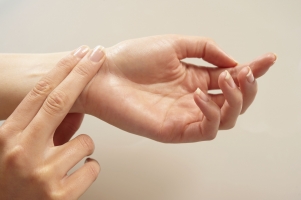Bradycardia Symptoms
 Bradycardia symptoms result from the heart’s inability to pump adequate amounts of blood to meet body needs. Some patients with bradycardia may experience no symptoms of this condition. However, in cases of bradycardia with heart rates less than 40 bpm the symptoms are:
Bradycardia symptoms result from the heart’s inability to pump adequate amounts of blood to meet body needs. Some patients with bradycardia may experience no symptoms of this condition. However, in cases of bradycardia with heart rates less than 40 bpm the symptoms are:
- Dizziness – experienced when the pulse slows;
- Blackout, black spots in the eyes;
- Semi-conscious state and short periods of unconsciousness. The brain suffers from a lack of oxygen (hypoxia). Therefore, bradycardia quite often provokes fainting and seizure attacks lasting from several seconds and up to 1 minute. This is the most dangerous condition in bradycardia, and requires immediate medical attention. A prolonged attack may induce cessation of respiratory activity;
- Cold sweat;
- Labored breathing;
- Heart pain. Angina of effort and angina at rest are observed together with bradycardia;
- Fatigue, weakness, difficulty exercising. Rapid fatigue develops against the background of bradycardia;
- Problems with memory and focused attention;
- Fluctuations of blood pressure. Poorly responding to the treatment increased or instable blood pressure develops in the setting of the slow heart rate or systematic slowing of pulse;
- Also the symptoms of heart failure which develops in the setting of the blood circulation reduction join chronic bradycardia. And as a result, all body organs and tissues suffer from hypoxia.
In case of severe bradycardia (heart rate is below 40 bpm), which leads to the development of heart failure, a surgical intervention to implant a pacemaker may be required.
Next chapter:Bradycardia tests and diagnosis
Featured Articles
A stroke can cause problems with communication if there is damage to the parts of the brain responsi ...
People with irregular bowel movements often complain about elevated blood pressure that doesn’ ...
A mini-stroke is a temporary disruption in blood flow to the brain, spinal cord or retina that doesn ...
It is well known that rheumatoid arthritis is an auto-immune disease that primarily affects joints. ...









